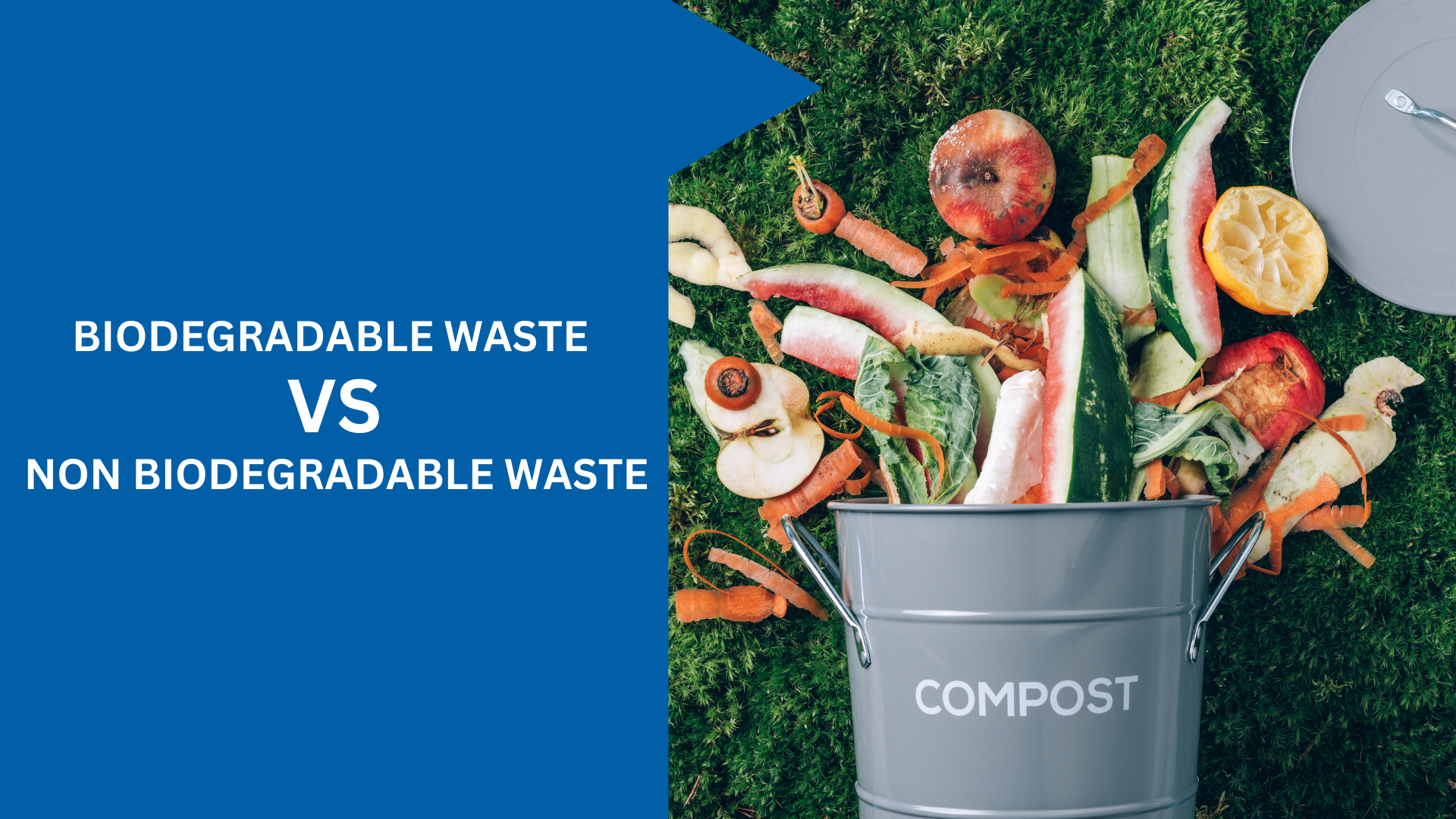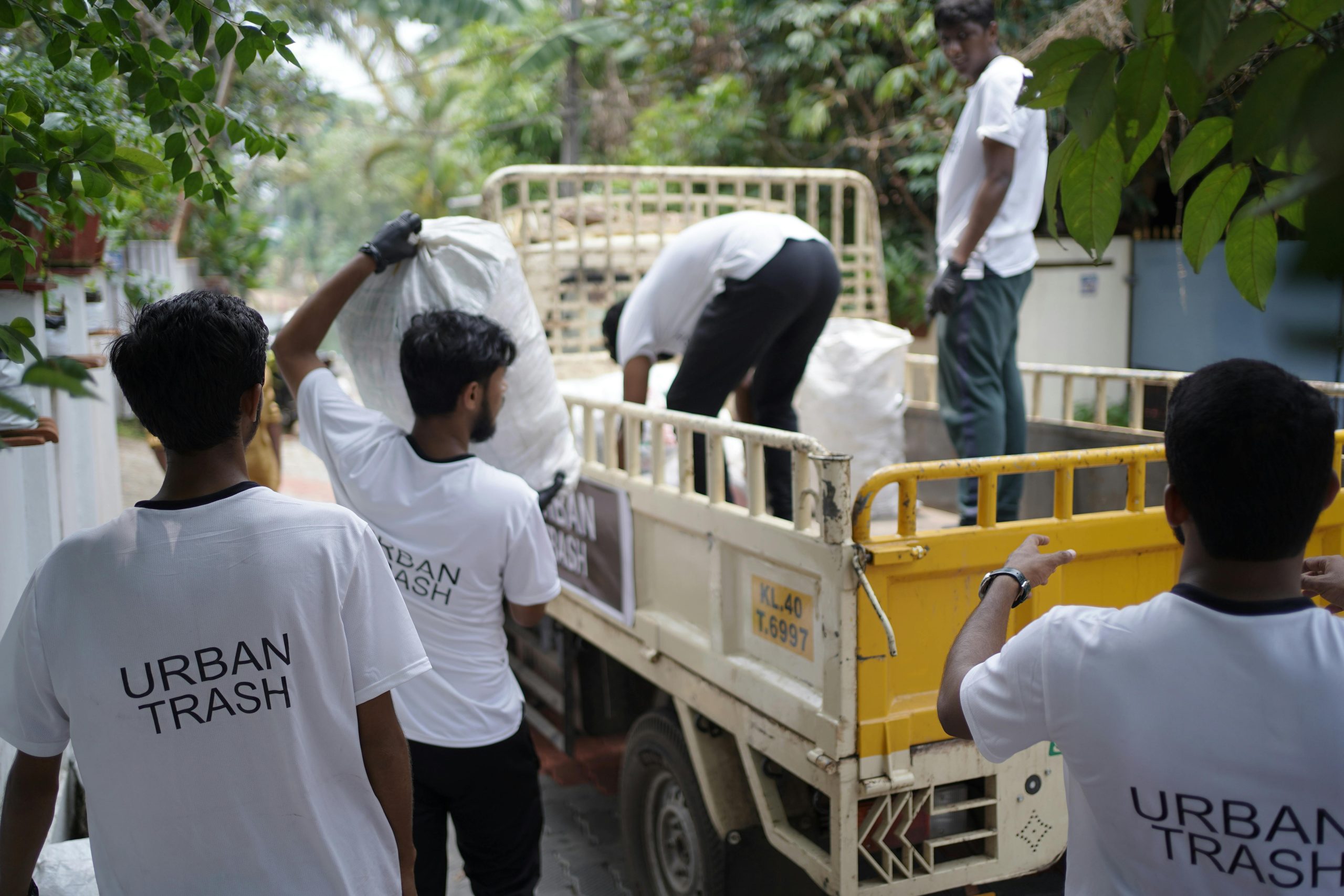Waste management is a crucial aspect of environmental conservation that touches on every part of our daily lives. From the kitchen scraps we throw away to the plastic packages that our goods come in, understanding the distinction between biodegradable and non-biodegradable waste is fundamental to effective waste management and environmental sustainability.
The Importance of Differentiating Between Biodegradable and Non-Biodegradable Waste
Recognizing the difference between these types of waste is essential for effective recycling and waste management. It informs which materials can be safely composted, and which require recycling or special disposal methods to mitigate their environmental impact.
Difference between Biodegradable and Non-Biodegradable Waste
What is Biodegradable Waste?

Biodegradable waste comprises materials that decompose naturally under the action of microorganisms such as bacteria and fungi. This includes kitchen waste, garden waste, paper, and wood.
Know More–
The environmental impact of biodegradable waste, when managed properly, can be minimal. It decomposes into harmless substances that can enrich soil fertility, making it a crucial component of organic farming and sustainable environmental management.
What is Non-Biodegradable Waste?
 In contrast, non-biodegradable waste consists of materials that cannot be easily broken down by natural processes. This includes plastics, metals, glass, and certain types of chemicals.
In contrast, non-biodegradable waste consists of materials that cannot be easily broken down by natural processes. This includes plastics, metals, glass, and certain types of chemicals.
Know more–
The environmental challenges posed by non-biodegradable waste are significant. They persist in the environment for years, polluting land and waterways, and contributing to global issues like ocean plastic pollution.
Handling waste
 Handling Biodegradable waste
Handling Biodegradable waste
One of the most effective ways to manage biodegradable waste is through composting. Home composting systems and industrial composting facilities can turn organic waste into valuable compost for agriculture. Additionally, biodegradable waste can be used to produce biogas, a renewable energy source.
Handling Non-Biodegradable Waste
For non-biodegradable materials, recycling and reuse are key. Innovative recycling methods are continually being developed, particularly for plastics, to reduce their environmental footprint. Safe disposal practices, such as properly segregating hazardous waste, are also crucial.
The Impact of Waste
On the Environment
Biodegradable waste, if not properly managed, can contribute to methane production in landfills, a potent greenhouse gas. Non-biodegradable waste, on the other hand, accumulates in ecosystems, disrupting habitats and marine life.
On Human Health
Mismanaged waste can lead to water and soil contamination, affecting food sources and leading to health problems in communities.
Waste Management Strategies
Reducing
Minimizing waste generation is the first step towards a sustainable future. At home, this can involve mindful purchasing and food consumption practices.
Reusing
Reusing materials extends their life cycle, reducing the need for new resources. Creative reuse of items can significantly cut down waste.
Recycling
Recycling transforms waste materials into new products. Understanding proper recycling practices is crucial for effective waste management, though challenges like contamination can hinder the process.
Government Policies and Public Awareness
Effective waste management requires supportive government policies, including regulations on waste disposal and recycling. Public engagement and education initiatives are also vital in encouraging responsible waste management practices among individuals and communities.
Biodegradable Alternatives
Seeking out biodegradable alternatives for everyday items can drastically reduce the environmental footprint of our consumption.
Technological Advances
Innovations in Biodegradability
New technologies are making materials more biodegradable, offering promising alternatives to traditional plastics.
Challenges and Solutions
While innovations are promising, they come with challenges, such as scalability and cost. Solutions involve both technological advancements and societal shifts in consumption.
Future Perspectives
Looking ahead, innovations in waste management and the role of technology promise more sustainable approaches to handling both biodegradable and non-biodegradable waste. From advanced recycling technologies to biodegradable plastics, the future holds potential for significant improvements in environmental conservation.
Conclusion
Understanding and managing biodegradable and non-biodegradable waste is a cornerstone of environmental sustainability. By differentiating between these types of waste and adopting appropriate management strategies, we can minimize our environmental impact and contribute to a healthier planet.
Related Posts:
- What is Hazardous Waste Management? Complete Overview
- How India’s Zero Garbage Cities Could Inspire The World
- The Circular Economy: How it is Changing the Future of Plastic Waste
FAQs
What is the difference between biodegradable and non-biodegradable waste?
Biodegradable waste can decompose naturally into harmless substances, while non-biodegradable waste does not break down easily and can persist in the environment for a long time.
How can individuals contribute to managing biodegradable waste?
Individuals can contribute by composting organic waste at home, reducing food waste, and choosing products with minimal packaging.
Are there any innovative methods to recycle non-biodegradable waste?
Yes, there are several innovative recycling methods, such as chemical recycling of plastics and upcycling projects that repurpose waste materials into new products.
What role do government policies play in waste management?
Government policies play a crucial role in setting regulations for waste disposal, encouraging recycling and sustainability initiatives, and funding research on waste management technologies.
How can public awareness influence waste management practices?
Public awareness can lead to more responsible waste management practices, including reduced consumption, proper waste segregation, and participation in recycling programs.


 Handling Biodegradable waste
Handling Biodegradable waste